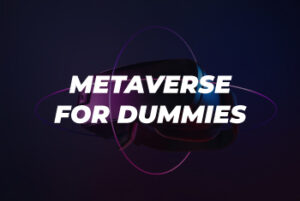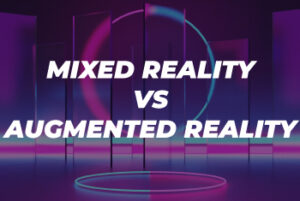

Augmented Reality VS Artificial Intelligence
Augmented Reality VS Artificial Intelligence
In order to keep up with the ever-changing digital landscape, businesses are constantly looking at how they can implement the latest and greatest technology to better serve their customers and achieve their business goals. A question we get asked a lot is what is the difference between augmented reality vs artificial intelligence.
Augmented Reality (AR) and Artificial Intelligence (AI) are two of the leading technologies available today. The AR market is projected to be worth over $18 billion in 2023, and by 2025, the global AI market is set to be worth $126 billion.
But with so many innovative ways to use these technologies, it can be difficult to work out the best solution for your unique business needs.
In this blog, we’ll help you understand the difference between AR and AI, and the many ways that these amazing technologies can be used.
What is the difference between AR and AI?
AR is a technology that superimposes a computer-generated image on a user’s view of the real world. This technology, therefore ‘augments’ the real, physical world with the overlay of digital imagery. One of the most widely known and used examples of augmented reality is Snapchat filters. So, comparing augmented reality vs artificial intelligence is not as simple as it sounds.
Examples of AR:
Virtual Try-on
Adidas launched their own AR-enabled try on feature through their iOS App. Users were able to virtually try on footwear by aiming the camera on their smartphone towards their feet, where the virtual footwear models would then appear.
Product Launches and Demonstrations
Samsung used this technology to their advantage when they held a virtual press conference to unveil their new products. Attendees were able to scan a QR code on their screen and see 3D digital displays and demonstrations of the products, which were all animated to demonstrate their features and functions.
Enhance Physical Products
Coca Cola used AR technology for their holiday campaign. By scanning their drinks cans via the Coca Cola App, users were able to see an AR display of polar bears in an arctic environment, helping spread awareness of the holiday promotion.
AI is the use of digital technology to create systems capable of performing tasks commonly thought to require human intelligence. Generally, this involves machines finding patterns in large amounts of data and using this data to perform repetitive tasks, without the need for human guidance. Many of us use AI in our everyday lives through virtual assistants like Siri and Alexa. They interpret our speech, allowing them to act on our commands such as setting alarms, making phone calls, and answering our questions, without the need for us to type them into Google. These types of AI are created to make our everyday tasks easier, faster and more efficient. Basically, AI does all the hard work for us!
Examples of AI:
Customer Support Chatbots
Businesses can leverage chatbots on their website and social media to automatically respond to messages and provide customer support. This helps save time and money as no human intervention is needed to respond to messages. Using chatbots can therefore help improve the user experience for customers who need answers to questions quickly.
Predict Buyer Behaviour
With AI, you’re able to better understand the preferences and needs of customers through intelligent data analysation. AI can be used to manage and collect data about buyer behaviour, which can then be used to predict future behaviour and create targeted advertisements aimed at the right customers.
Voice Search
Voice search, also called voice-enabled search, uses speech recognition to allow the user to use their voice to search the internet, websites, or apps.
Does AR use AI?
AR and AI are distinct technologies, each with its own benefits and strengths. However, they can be combined together for a variety of uses.
AR and AI can make a great match, complement each others’ features, and together can help to create richer, more efficient and practical solutions.
Uses of AR and AI Combined
Speech Recognition
Most of us are familiar with speech recognition assistants like Siri, Alexa, and Cortana. They listen and perform actions by the power of our own voice. This technology can also be used in combination with AR. For instance, H&M introduced voice recognition to their AR styling app, where shoppers could order outfits via voice commands, and see AR displays of the outfits on a mirror screen.
Object Recognition
When the camera on your smartphone is pointed towards an object, AI is able to recognise the object and detect what it is. This can then be used in combination with AR to digitise the objects. For instance, the app ClipDrop is an AR copy-paste software that allows users to capture real-life objects from their environment using their camera, and transfer those items to their desktop screen. It’s like copying and pasting, but with real-life objects!
Building Digital Twins
Digital twins are virtual representations of objects or systems. They allow us to take things such as buildings from the physical world into the digital world. Digital twins can be updated using real-time data, and AI helps mimic physical objects, people, devices and things from the real-world object to their digital counterparts with microscopic detail. This technology can be used to transform buildings into digital twins to provide digital concierge services to visitors. One great example of this is Resonai’s Vera; a digital concierge service that uses AR displays to provide information, navigation and real-time analytics to visitors.
Maps and Directions
Using the camera on your smartphone, AI can identify your current location, and display AR directions on your screen in the form of text and arrows to help you navigate to your desired destination. This is how Google Maps AR works.
Scan and Translate Text
Travelling abroad is a whole lot easier when you can understand the country’s language. With AI and AR technology, you can easily and efficiently translate any written text just by using your smartphone. By using your camera on your smartphone and pointing it towards a piece of text, AI will recognise the text and an AR translation will appear on your screen. You can try out this technology using the Google Lens app.
Should you use AR or AI? Or both?
As you can see, both AI and AR are incredibly powerful technologies, each with its own individual strengths and uses. Using either technology can be a great way to improve your business operations and enhance customers’ experience with your brand.
However, both AI and AR can also be combined to enhance experiences and make them more engaging. It is not always a question of augmented reality vs artificial intelligence. Taking a mixed approach can be a good way to get the best out of each technology. It’s also a great way to stand out from your competitors by offering rich, unique experiences that are both imaginative and effective.
If you’re unsure of which immersive technology is right for you, speaking to one of our specialists will be the best way to ensure you make the right choice. We’ll be able to create a solution based on your unique business needs and goals so that you can get the best results out of these amazing technologies.

